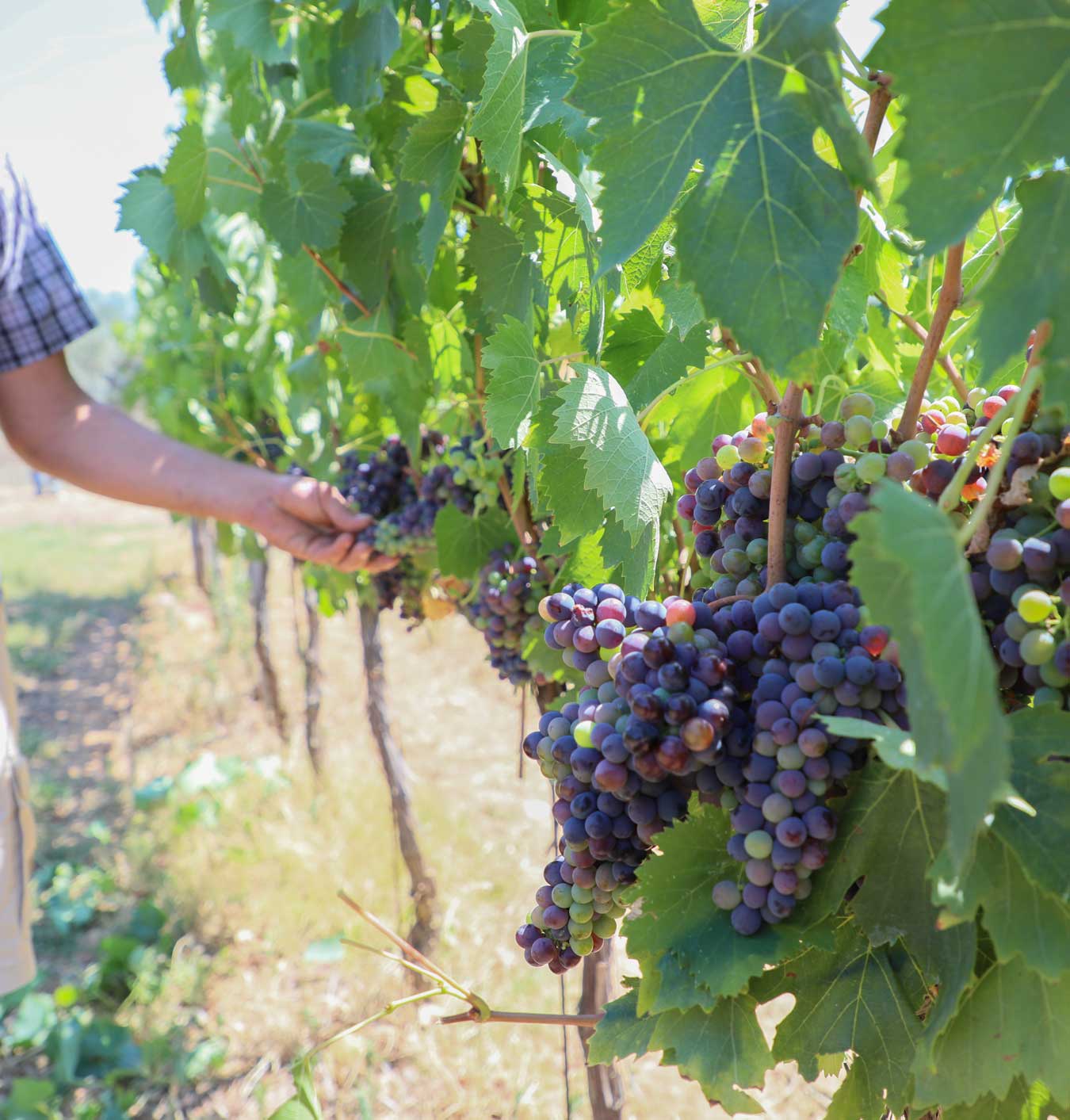THE EXCELLENCE OF OUR TERRITORY
The most widely planted varieties in the Santa Lucia appellation are Sangiovese, Vermentino, Ansonica, Alicante, Merlot, Syrah, Cabernet Sauvignon, Petit Verdot, Viognier and Ciliegiolo. The company’s yearly production is equal to 220.000 bottles of wine. Our vineyards, which cover an area of almost 40 hectares, are all located in the municipality of Magliano in Toscana, Orbetello and Monte Argentario. The vines grow on these lands of different and opposite geological origins, which create ideal conditions for rain water to drain, roots to breathe and plants to make the most of the minerals in the various layers of soil. Sangiovese is a variety that fascinates us and that we grow the most in our vineyards. The other native grapes that we have chosen to perfect the character of our wines are Alicante, and Vermentino and Ansonica for white wines. Merlot, Cabernet Sauvignon, Petit Verdot, Syrah, Ciliegiolo and Viognier complete the range of grapes we use in our wines. The vine training methods we employ are the spurred cordon and the high cordon.
The first of our vineyard areas is at the Santa Lucia Farm Holiday, in Municipality of Orbetello. Here Vermentino, Ansonica, Viognier, Petit Verdot and Merlot varietals are grown. Brigante, Santa Lucia, Dueseiquattro, PerLapo and Graticcio wine are made here, exclusively from grapes grown in this area. Our largest vineyard is situated right next to the Cantina Santa Lucia wine cellars, close to Magliano in Toscana. Here, the following varietals are grown: Sangiovese, Merlot, Alicante and Cabernet Sauvignon. The well-known Morellino “Tore del Moro” di Scansano DOCG wine is made here, exclusively from grapes grown in this area. Our oldest vineyard is situated in Monte Argentario, 300m above sea level. The varietal grown here is Ansonica. Wine is made from grapes grown in terrace or steep slopes vineyards with a slope than 26%.
THE EXCELLENCE OF OUR TERRITORY

The most widely planted varieties in the Santa Lucia appellation are Sangiovese, Cabernet Sauvignon, Merlot, Vermentino, Ansonica, Colorino, Alicante e Merlot. The company’s yearly production is equal to 150.000 bottles of wine. Our vineyards, which cover an area of almost 30 hectares, are all located in the municipality of Magliano in Toscana, Orbetello and Monte Argentario. The vines grow on these lands of different and opposite geological origins, which create ideal conditions for rain water to drain, roots to breathe and plants to make the most of the minerals in the various layers of soil. Sangiovese is a variety that fascinates us and that we grow the most in our vineyards. The other native grapes that we have chosen to perfect the character of our wines are Alicante for red wines and Vermentino and Ansonica for white wines. Merlot, Cabernet Sauvignon and Petit Verdotcomplete the range of grapes we use in our wines. The vine training methods we employ are the spurred cordon and the high cordon.
The first of our vineyard areas is at the Santa Lucia estate, in Orbetello. Here Sangiovese, Vermentino, Ansonica and Trebbiano varietals are grown. Brigante, Losco and Graticcio wine are made here, exclusively from grapes grown in this area. Our largest vineyard is situated right next to the Cantina Santa Lucia wine cellars, close to Magliano in Toscana. Here, the following varietals are grown: Sangiovese, Alicante and Cabernet Sauvignon. The well-known Morellino “Tore del Moro” di Scansano DOCG wine is made here, exclusively from grapes grown in this area. Our oldest vineyard is situated in Monte Argentario, 300m above sea level. The varietal grown here is Ansonica. Wine is made from grapes grown in terrace or steep slopes vineyards with a slope than 26%. Le nostre prime uve vennero quindi vinificate da Giuseppe, detto “Il Moro”, e successivamente fu il figlio, Salvatore, detto “Tore del Moro”, che insieme ai suoi tre figli maschi ed una femmina, portò avanti l’attività fino al 1956. In questo stesso anno il figlio più grande, Nicola, venne ad abitare nell’attuale sede dell’azienda, ed iniziò subito a impiantare qui il suo vigneto; sfortunatamente, a causa del terreno non troppo adatto, dovette aspettare gli anni ‘60 per poterne avere a disposizione altro pedocollinare dove impiantare i nuovi vigneti di Sangiovese, Ciliegiolo, Malvasia e Ansonica. Vennero poi impiantate uve Vermentino.
40
hectares of vineyards
220.000
annual bottles produced
14
wines produced